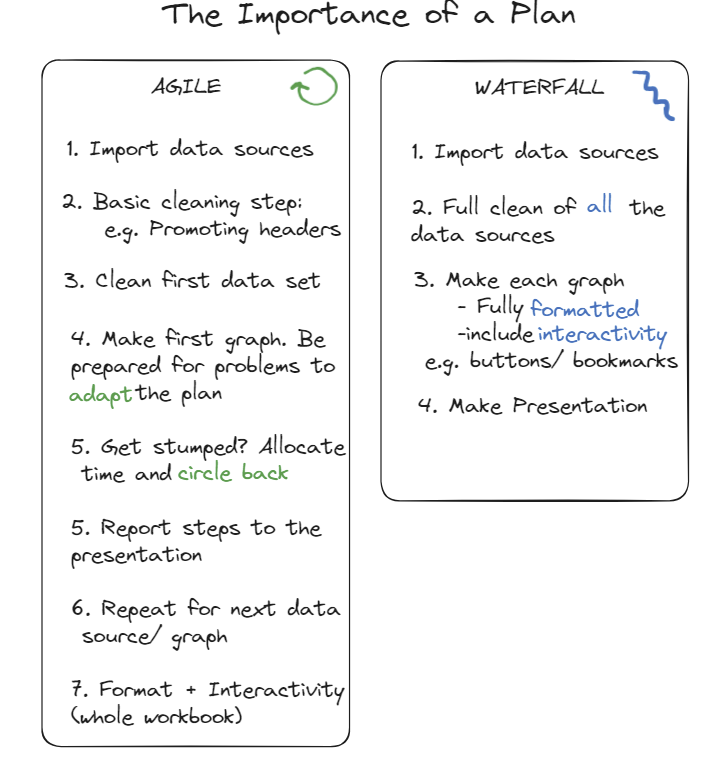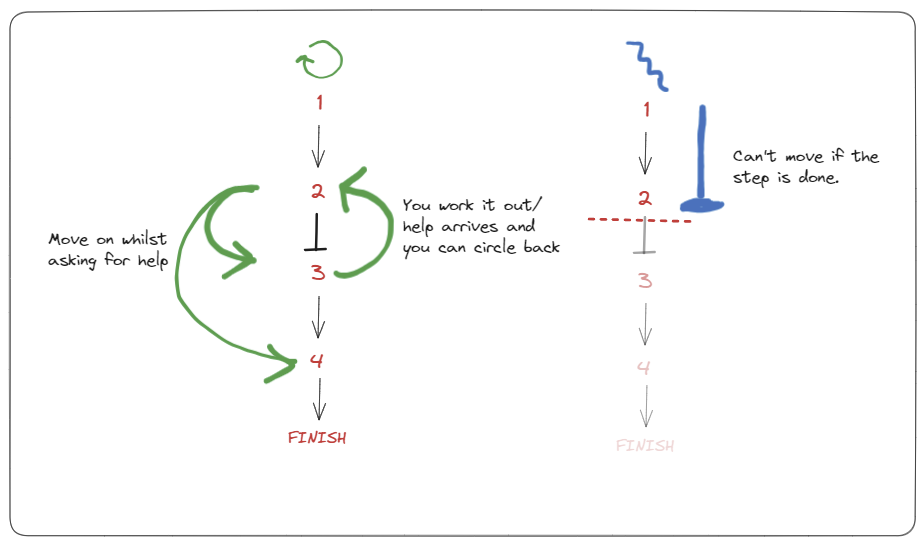What makes a good plan? And how does it help you cross the finish line?
There are two main types of workflow: AGILE and WATERFALL. An agile workflow means that you are adaptable, by not working one step at a time. The steps are not fixed, so you can switch between them. This is particularly helpful when you are part of a team where your own work informs employees' work further down the line.
A waterfall approach is like a production line of processes. You cannot move onto the next step until the previous one is completed. Although there is a sense of success for 'completing' something, it can slow the overall production line, and if there is a problem, then the production line is halted. The waterfall approach however, still remains the norm for many companies who have used this approach for many years therefore. Changing an existing workflow is arduous, and often not well received because companies, and people, do not like change!
Let me use an example workflow plan based on a project I was asked to complete as a Friday project...

Because there are more steps, the agile plan looks more complicated and longer to complete. But let's take a closer look...

If you are following a waterfall style of approach, if you cannot complete a particular step for a period of time (e.g. you are stuck, someone that gives you the dataset is on holiday/ you are sick/ you have to go to your daughter's sports day!) the production line cannot move on and you are delayed.
In contrast, the agile workflow allows you to be flexible. If you get stuck on a step, no problem, you can carry on with other steps whilst you or your team troubleshoot. Therefore, potential delays are reduced and you can still cross the finish line and produce a final product, even if it is not the finished product.
